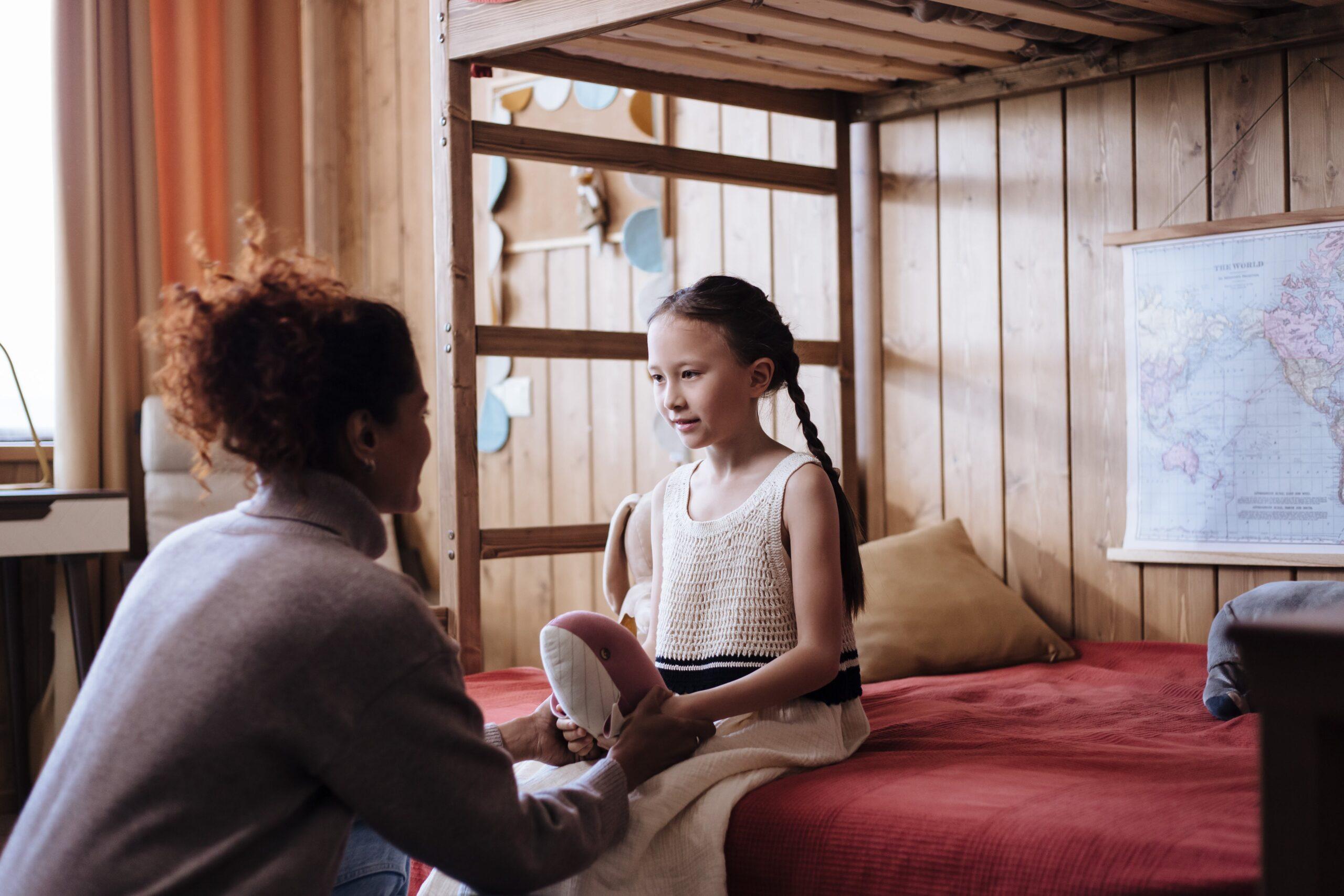Family, those closest to us, often serve as our healing angels. However, this healing may not always come wrapped in the red ribbon of unconditional love; it might be concealed within grudges, triggers, and challenging emotions.
Maintaining harmony within our families can sometimes feel like an uphill battle in our daily lives. Emotions run high, and conflicts can unexpectedly arise, leaving us feeling reactive and overwhelmed.
Yet, by incorporating practices and mindfulness strategies, it becomes possible to create a peaceful presence within your family. These methods can help diffuse conflicts and foster a harmonious environment. In this blog, we’ll explore actionable tips and techniques to help you overcome reactivity, navigate conflicts, and hold a space of peaceful presence for your loved ones.
Understanding Reactivity:
Reactivity refers to the tendency to react quickly and emotionally to stimuli, situations, or events. In interpersonal communication and emotional intelligence, being reactive often involves responding impulsively without taking the time to consider the situation calmly. Reactivity can lead to conflict, misunderstandings, and ineffective communication. In contrast, being non-reactive involves maintaining composure, thinking before responding, and choosing responses thoughtfully.
Reactivity often stems from unprocessed emotions and triggered responses. Before delving into Practices, it’s crucial to understand the roots of reactivity.
Practicing mindfulness involves observing our thoughts and emotions without passing judgment, creating a mental space for self-awareness. As we identify our triggers, we learnto respond thoughtfully rather than reacting impulsively.
Imagine this: It’s the Holiday season. The family gathers for dinner, sharing stories and laughter. Suddenly, a seemingly innocent comment turns into a heated argument. How did we get here? Welcome to the world of reactivity, where unprocessed emotions act like hidden landmines, waiting to explode.
Practice #1: Cultivate Mindful Awareness
Mindfulness is a powerful tool for overcoming reactivity. Begin by incorporating short mindfulness exercises into your daily routine. This could include focused breathing, body scans, or mindful walking. Regularly practicing mindfulness allows you to stay present in the moment, reducing the likelihood of reacting to stressors unconsciously.
Picture this: It’s amidst family chaos and rising stress levels. Take a moment to breathe. Close your eyes, feel the weight of each inhale and exhale. In that brief pause, you anchor yourself in the present moment, becoming the calm in the storm.
Practice #2: Practice Active Listening
Communication is at the heart of any family dynamic. Miscommunication or misunderstandings frequently give rise to conflicts. Engaging in active listening requires offering complete attention to the speaker, setting aside judgment, and responding considerately. This cultivates a feeling of validation and empathy, creating a pathway for communication that is both effective and harmonious.
Scenario: Your teenage daughter storms off after a seemingly innocuous comment. Instead of chasing her down, you take a moment. When she’s ready to talk, you actively listen, absorbing her words without planning your next rebuttal. The result? It is a bridge of understanding, not a battleground.

Practice #3: Increase Emotional Intelligence
Understanding and managing emotions is crucial to creating a peaceful family environment. Teach yourself and your family members to identify and express their feelings in a healthy way. Embracing emotional intelligence creates a culture of open communication and mutual support, reducing the likelihood of escalating conflicts.
Imagine: Your partner appears distant, lost in thought. Instead of assuming, you ask, “How are you feeling?” This simple question unlocks a floodgate of emotions. Embracing emotional intelligence transforms guessing games into heartfelt conversations.
Defusing Conflict:
Conflict is a natural part of human interaction, but it’s essential to manage it constructively. Defusing conflict means intentionally reducing tension, de-escalating disagreements, and finding acceptable resolutions for all parties involved. Defusing conflict often requires active listening, empathy, and effective communication skills. It consists in avoiding aggressive or confrontational behavior and instead focusing on understanding the concerns of others, finding common ground, and seeking mutually beneficial solutions.
The following Practices are designed to help defuse conflicts and promote resolution.
Practice #4: Take a Pause
When conflicts arise, taking a step back before responding is essential. Encourage family members to recognize when emotions are running high and take a brief pause. This allows for reflection and helps prevent impulsive reactions that may escalate the conflict.
Real Talk: Your spouse raises their voice, and the world is closing in. Hit pause. Take a step back. This brief intermission prevents the conflict from escalating into a full-blown drama.
Practice #5: Use “I” Statements
Promote effective communication by encouraging the use of “I” statements. Instead of blaming or accusing, express your feelings and needs using words like “I feel” or “I need.” This shifts the focus from assigning blame to finding collaborative solutions, fostering a more positive and constructive atmosphere.
Here’s the deal: Instead of pointing fingers, you say, “I feel overwhelmed when responsibilities pile up.” This shifts the narrative from blame to collaboration, turning a potential argument into a shared problem-solving mission.
Practice #6: Find Common Ground
It’s easy to lose sight of common ground in the heat of a conflict. Encourage family members to identify shared values and goals. This helps to create a sense of unity and reminds everyone that, despite differences, there are areas of agreement that can serve as a foundation for resolution.
In the Ring: Family conflicts feel like a wrestling match, but you’re all on the same team. Identify shared values – perhaps the love for movie nights or the joy of a home-cooked meal. Discovering common ground transforms conflicts into opportunities for unity.
Holding a Space of Peaceful Presence:
Holding a space is a concept often used in the context of emotional support and communication. It means creating a safe and non-judgmental environment for someone to express themselves freely. When you “hold a space” for someone, you are allowing them to share their thoughts, feelings, or experiences without fear of criticism or interruption. This concept is often applied in counseling, coaching, or day-to-day conversations where one person needs support. Holding a space involves being present, attentive, and empathetic, allowing others to express themselves openly.
Once conflicts are defused, the next step is to create an ongoing atmosphere of peace within the family. The following teachings focus on maintaining a harmonious environment through intentional practices.
Practice #7: Establish Rituals of Connection
Family rituals, whether daily check-ins, weekly outings, or unique traditions, create a sense of connection and stability. These rituals become anchors during challenging times and contribute to a feeling of togetherness.
Sunday Dinner Magic: Make Sunday dinners more than a meal – make them a ritual. Share the highs and lows of the week. This intentional connection time becomes the heartbeat of your family, grounding you in shared experiences.
Practice #8: Foster a Culture of Gratitude
Encourage family members to express gratitude regularly. Gratitude has the power to shift perspectives and create a positive atmosphere. Consider implementing a daily or weekly gratitude practice where each family member reflects on and shares something they are thankful for.
Gratitude Blitz: Imagine a household where “thank you” isn’t just a phrase but a daily ritual. Expressing gratitude transforms ordinary moments into extraordinary ones. It’s the secret sauce that binds family members in appreciation.
Practice #9: Prioritize Self-Care
A peaceful family environment starts with individuals taking care of their well-being. Emphasize the importance of self-care within the family, whether through regular exercise, adequate sleep, or personal hobbies. When each family member prioritizes their well-being, it contributes to a healthier overall dynamic.
Self-Care Avengers: Envision every family member as a self-care superhero. Dad takes a jog, Mom enjoys a quiet read, and the kids pursue their hobbies. This commitment to individual well-being sets the stage for a family that values and supports each other.
Nurturing Presence in Family

In embracing challenges, we embrace each other. Through the shared commitment to staying present, families transform moments of difficulty into opportunities for growth, forging a legacy of strength, unity, and enduring love. The odyssey continues, and with each challenge, the family evolves, creating a tapestry that tells the story of a resilient and interconnected journey through life.
- The Unified Front of Family: An Unbreakable Bond
The family, viewed as a unified front, serves as a sanctuary of support and understanding. When challenges emerge, the collective strength of the family unit becomes apparent. Open communication fosters a shared understanding of values, creating a foundation upon which challenges can be faced together. This unity not only provides a sense of security but also offers a framework for navigating the complexities of life.
- Parents: Architects of Emotional Security and Resilience
Parents are the first teachers of life. Parents play a pivotal role in navigating challenges in modeling the art of staying present. Their ability to remain grounded in adversity becomes a blueprint for emotional security. As architects of their children’s worldview, parents guide them through life’s twists and turns, teaching resilience and the transformative power of presence.
- Children: Learning Resilience Through Observation
With their remarkable capacity to absorb the world around them, children learn invaluable lessons from their parents. Observing how parents navigate challenges with presence shapes children into emotionally intelligent beings. They develop resilience, understanding that challenges are not roadblocks but stepping stones to growth and self-discovery.
- Partners: A Symphony of Support and Understanding
At their core, partnerships are built on shared experiences and mutual support. Staying present together involves more than weathering the storms; it requires active listening, empathy, and a commitment to shared growth. Through facing challenges hand in hand, couples strengthen their emotional connection, deepening their understanding of one another and forging a resilient bond.
- Caregiving: The Art of Compassion Amidst Illness and Loss
Caregivers, often thrust into support roles during illness or loss, embody the essence of compassionate presence. In staying connected to the sacred dimension of life, they navigate the depths of grief with grace. The caregiving journey transforms into a profound exploration of meaning within the challenges, emphasizing the eternal connection within the ephemeral moments.
Creating a peaceful and harmonious family environment is an ongoing journey that requires commitment and practice. By incorporating these Practices into your daily life, you can overcome reactivity, defuse conflicts, and hold a space of peaceful presence for your family.
Remember, it’s the small, intentional actions that contribute to a thriving and connected family life. Embrace the teachings, be patient with the process, and watch as your family flourishes in an atmosphere of love, understanding, and tranquility.
Need personal guidance to improve your family dynamics? Talk to our expert Life Coaches. Aspiring to guide others? Explore our coach training course for the tools you need.




























